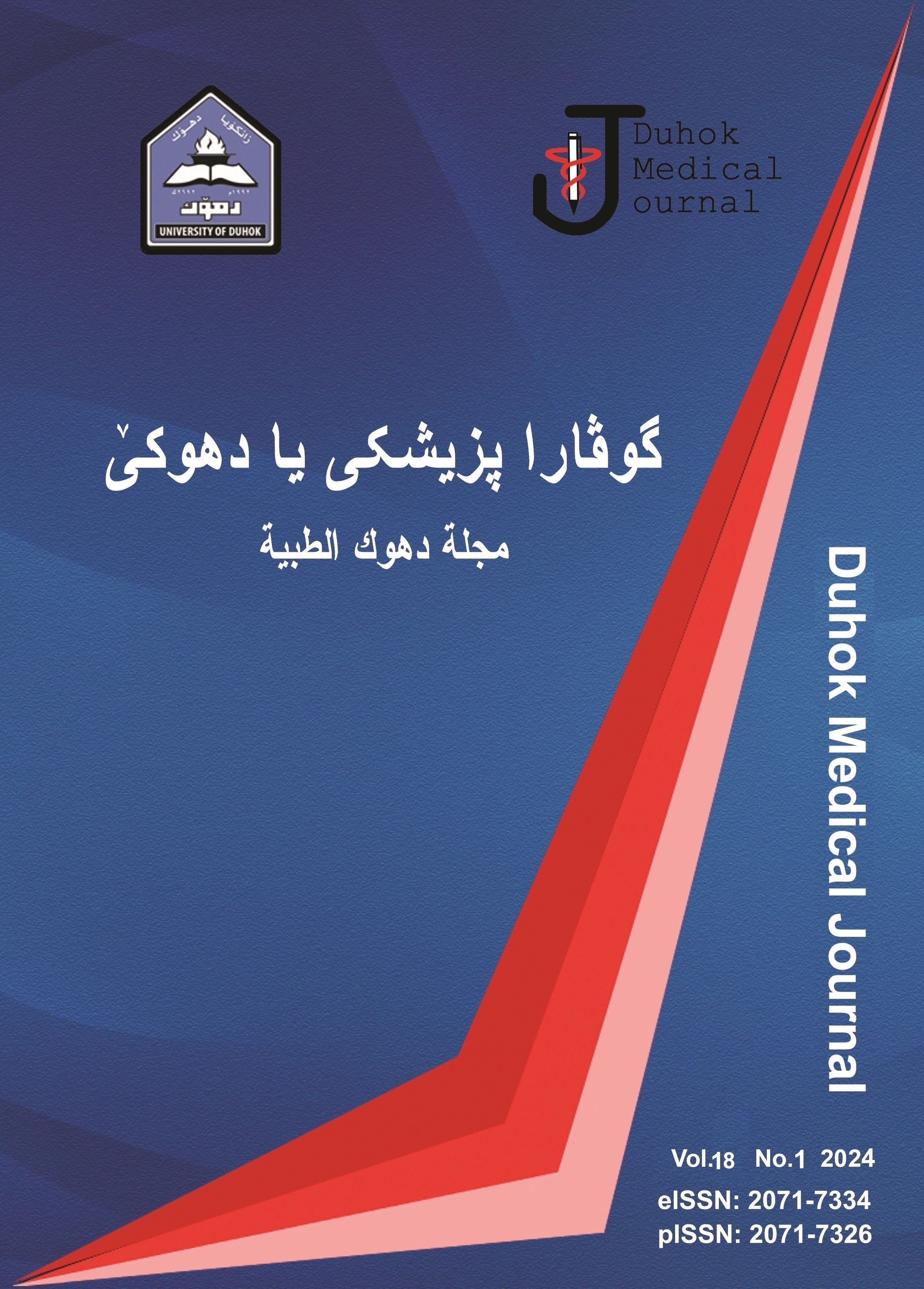PAROTID TUMORS; PRESENTATION, SURGICAL MANAGEMENT AND COMPLICATIONS
Abstract
https://doi.org/10.31386/dmj.2024.18.1.5
Background: The parotid gland is the most common salivary gland affected by tumors, 80% of them affects the parotid glands and 80% affects the superficial lobe. Pleomorphic adenoma is the commonest salivary tumor. Other types of tumors occur less frequently. Most tumors are diagnosed with ultrasound; MRI shows more anatomical details. Superficial parotidectomy is done for benign tumors, more extensive resection is done for malignant tumors.
Results: This a cross sectional study which included 69 patients who underwent various types of parotid surgeries over a period of 4 years. The mean age of our patients was 45.29 years, and 52.2% were males. The tumor was present in the right parotid gland in 49.3%, in the left side in 43.5%, and was bilateral in 2.9%. The mean duration of symptoms was 29.67 months, all patients were sent for ultrasound and 42 patients were sent for the FNAC, 91.3% of patients underwent superficial parotidectomy. Pleomorphic adenoma was the commonest type of tumors which was diagnosed in 69.6%, followed by Warthin’s tumors in 13%, Non-Hodgkin's lymphoma in 4.3%, and the rest comprises some rare types of tumors. Complications were reported in 30.43% of patients and the commonest complications were transient facial nerve weakness followed by salivary leak (11.6 and 8.7 %) respectively.
Conclusion: Parotid tumors are rare types of tumors and pleomorphic adenoma is the commonest type, identifying the anatomy during surgery especially the course of the facial nerve is the most important step, complications are common but fortunately most are transient.
Downloads
References
2. R. A. Erlandson, C. Cardon-Cardo, and P. J. Higgins, "Histogenesis of benign pleomorphic adenoma (mixed tumor) of the major salivary glands. An ultrastructural and immunohistochemical study," The American journal of surgical pathology, vol. 8, pp. 803-820, 1984.
3. W. M. Mendenhall, C. M. Mendenhall, J. W. Werning, R. S. Malyapa, and N. P. Mendenhall, "Salivary gland pleomorphic adenoma," American journal of clinical oncology, vol. 31, pp. 95-99, 2008.
4. J. S. Monk and J. S. Church, "Warthin's tumor: A high incidence and no sex predominance in central Pennsylvania," Archives of Otolaryngology–Head & Neck Surgery, vol. 118, pp. 477-478, 1992.
5. L. Barnes, E. N. Myers, and E. P. Prokopakis, "Primary malignant lymphoma of the parotid gland," Archives of Otolaryngology–Head & Neck Surgery, vol. 124, pp. 573-577, 1998.
6. R. H. Spiro, A. G. Huvos, and E. W. Strong, "Adenoid cystic carcinoma of salivary origin: a clinicopathologic study of 242 cases," The American Journal of Surgery, vol. 128, pp. 512-520, 1974.
7. T. Nagao, I. Sugano, Y. Ishida, M. Hasegawa, O. Matsuzaki, A. Konno, et al., "Basal cell adenocarcinoma of the salivary glands: comparison with basal cell adenoma through assessment of cell proliferation, apoptosis, and expression of p53 and bcl‐2," Cancer: Interdisciplinary International Journal of the American Cancer Society, vol. 82, pp. 439-447, 1998.
8. N. Freling, W. Molenaar, A. Vermey, E. Mooyaart, A. Panders, A. Annyas, et al., "Malignant parotid tumors: clinical use of MR imaging and histologic correlation," Radiology, vol. 185, pp. 691-696, 1992.
9. P. Zbären, D. Guélat, H. Loosli, and E. Stauffer, "Parotid tumors: fine-needle aspiration and/or frozen section," Otolaryngology—Head and Neck Surgery, vol. 139, pp. 811-815, 2008.
10. J. E. Woods, G. C. Chong, and O. H. Beahrs, "Experience with 1,360 primary parotid tumors," The American Journal of Surgery, vol. 130, pp. 460-462, 1975.
11. R. L. Witt, "Facial nerve monitoring in parotid surgery: the standard of care?," Otolaryngology—Head and Neck Surgery, vol. 119, pp. 468-470, 1998.
12. R. L. Witt, "The significance of the margin in parotid surgery for pleomorphic adenoma," The Laryngoscope, vol. 112, pp. 2141-2154, 2002.
13. P. Å. Jakobsson, C. Blanck, and C. M. Eneroth, "Mucoepidermoid carcinoma of the parotid gland," Cancer, vol. 22, pp. 111-124, 1968.
14. E. Owen, A. Banerjee, M. Kissin, and A. Kark, "Complications of parotid surgery: the need for selectivity," British journal of surgery, vol. 76, pp. 1034-1035, 1989.
15. R. Marchese-Ragona, C. De Filippis, G. Marioni, and A. Staffieri, "Treatment of complications of parotid gland surgery," Acta Otorhinolaryngologica Italica, vol. 25, p. 174, 2005.
16. E. Vaughan and D. Richardson, "Facial nerve reconstruction following ablative parotid surgery," British Journal of Oral and Maxillofacial Surgery, vol. 31, pp. 274-280, 1993.
17. A. B. Gordon and R. Fiddlan, "Frey's syndrome after parotid surgery," The American Journal of Surgery, vol. 132, pp. 54-58, 1976.






